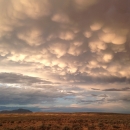States
Arizona, California, Colorado, Idaho, Montana, Nevada, New Mexico, Oregon, Utah, Washington, WyomingMapping Renewable Energy and Transmission Infrastructures Across Sagebrush Biome and Estimating Effects on Sage-Grouse Populations for a Management Decision Support Tool
| Funding Year | Amount | Location |
|---|---|---|
| FY24 | $144,277 | Rangewide |
| FY25 | $145,723 | Rangewide |
Project Description
Project will explore the impacts of different types of renewable energy infrastructure and electrical transmission lines and their attributes on sage-grouse population demographics across their range. Comprehensive mapping products will document when and where renewable energy infrastructure and electrical transmission lines were constructed in the sagebrush sagebrush
The western United States’ sagebrush country encompasses over 175 million acres of public and private lands. The sagebrush landscape provides many benefits to our rural economies and communities, and it serves as crucial habitat for a diversity of wildlife, including the iconic greater sage-grouse and over 350 other species.
Learn more about sagebrush biome and model their influence on sagebrush obligate species with a Bayesian hierarchical modeling framework.
Partners
U.S. Geological Survey, U.S. Fish and Wildlife Service - Science Applications


